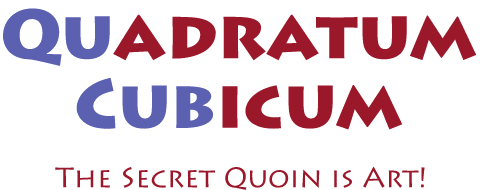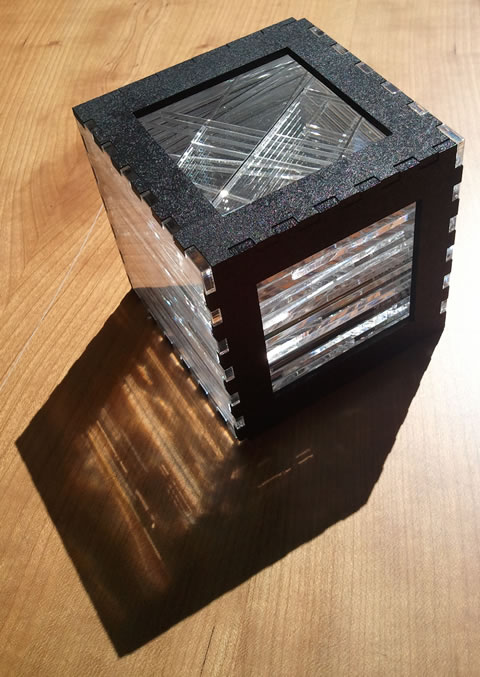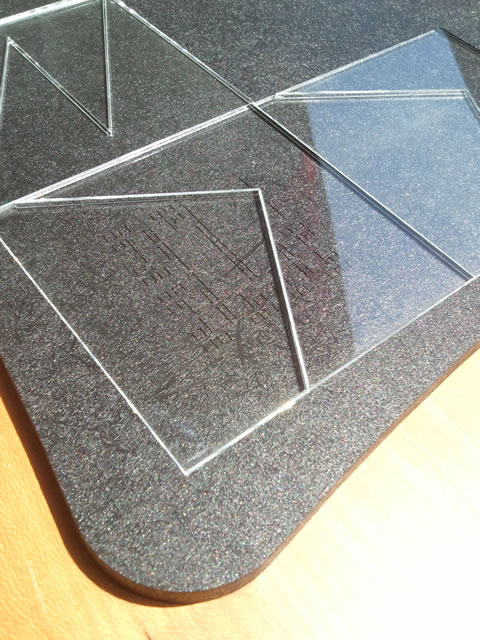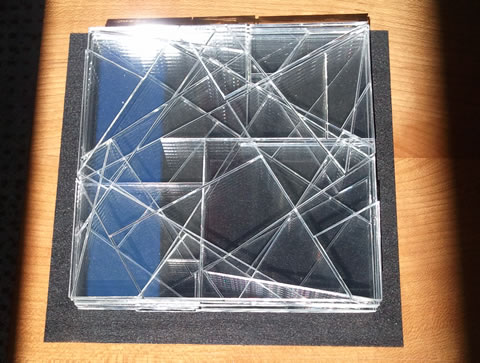

| Home | Order | Lost piece? | ||
| History | Hints | Web friends | ||
| References | Solutions | Challenges! | ||
 The Quadratum Cubicum is an straight-edges assembling puzzle (ASS-STRA) made of 68 pieces that can form 1, 3, 9, or 27 squares. Obviously, if you have nine squares, assembling them into a single large one is not that difficult :-) Your first challenge will be to make a cube. Even if this is within the scope of the youngest, it is nevertheless trivial. The size of the cube is 8.1 cm and consists of twenty seven small squares stacked together. With some practice, it can easily be put back together in just a few minutes.  The challenge of the Quadratum Cubicum does not stop there. If you have found the first step easy, you will certainly be tempted to rise to the second challenge, which is much more difficult, and consists in assembling the pieces to form a large 42 cm square! This puzzle has so many different combinations, that it cannot be solved by brute force, i.e. by trying all the possibilities. Thus you will have to find clues to help you solve the puzzle.   You all know how to cut a square into four identical squares? Cut a square into two identical squares is already a little less obvious. There are two solutions that require four or five pieces respectively. You've already got it? We prefer the one which is using the minimum parts. How to cut a square into three identical squares and using a minimum number of parts, is far more difficult... The Quadratum is entirely composed of nine different answers to this question. Those nine solutions all use between six and nine pieces and trace the discoveries of the most aesthetic proposed by mathematicians since ancient times until today. This problem has indeed been solved for the first time over a thousand years ago by Abu'l-Wafa' and the last solution discovered in 2010, is the only one that offers a dissection with all pieces having the same area! More on the fabulous history of this wonderful problem. 
|
||
| Home | Order | Lost piece? | ||
| History | Hints | Web friends | ||
| References | Solutions | Challenges! | ||